Spotted cat breeds possess an undeniable exotic allure, captivating feline enthusiasts worldwide. Their striking patterns evoke images of their wild ancestors, even though these breeds are firmly domesticated and cherished as wonderful companions.
“Many people dream of being able to have one of the big, beautiful wild cats in their living room. But that being pretty unrealistic, the next best thing is one of the small domestic cats with the look of their bigger kin,” explains Vickie Fisher, treasurer for The International Cat Association (TICA).
Let’s explore six remarkable spotted cat breeds that bring a touch of the wild into your home:
Bengal
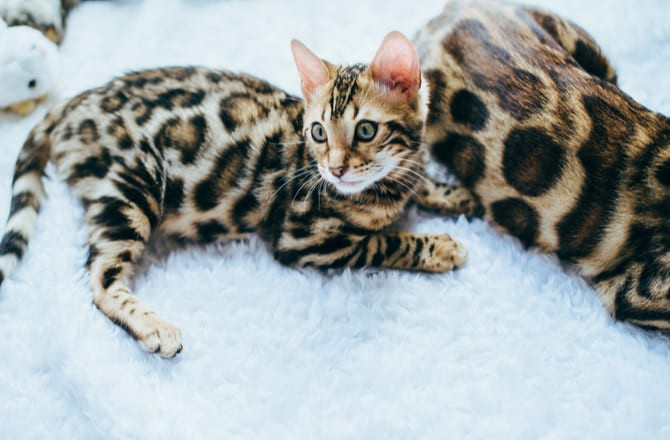 A বেঙ্গল cat with rosette markings, sitting alertly.
A বেঙ্গল cat with rosette markings, sitting alertly.
“The Bengal should look like a little leopard,” states Anthony Hutcherson, chairperson of TICA’s Bengal cat breed committee. Mirroring their larger, wild relatives, Bengals are exceptionally energetic and display a penchant for elevated perches. This playful breed thrives on interaction with humans and can be readily trained to perform tricks, Hutcherson notes.
“If you want a couch potato cat, don’t get a Bengal,” Hutcherson advises, highlighting their active nature.
The Bengal breed’s origins trace back to the early 1980s in California, thanks to Jean S. Mill. Mill’s pioneering work involved crossing a domestic cat with the Asian Leopard Cat, a diminutive, spotted, non-domestic feline species native to Asia, according to Hutcherson.
The Bengal stands out as the sole spotted domestic cat breed exhibiting distinctive markings known as “rosettes.” These rosettes bear a striking resemblance to those adorning leopards, jaguars, and ocelots. Bengals can also display a marbled pattern. Their coat colors are diverse, ranging from golden, bronze, mahogany, gray, and silver, all adorned with black or brown spots or marbling.
Recognizing the Bengal cat’s unique needs, Royal Canin has formulated a specialized cat food. This food is rich in protein and fat to support lean muscle mass, and the Y-shaped kibble of Royal Canin Bengal cat food is specifically designed for the Bengal’s jaw structure.
Egyptian Mau
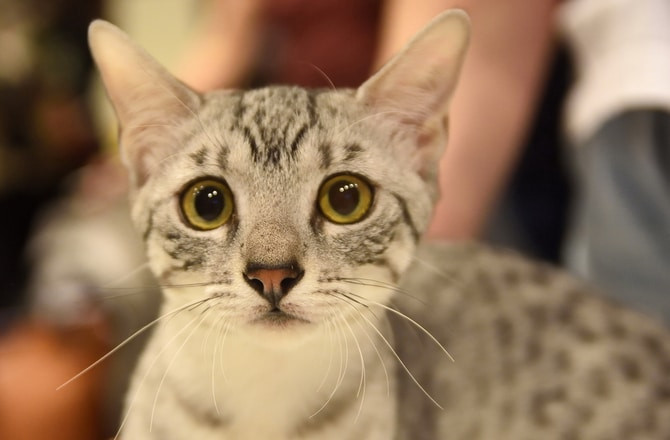 An Egyptian Mau cat with silver fur and striking green eyes, looking directly at the camera.
An Egyptian Mau cat with silver fur and striking green eyes, looking directly at the camera.
The Egyptian Mau exudes a regal aura and refined physique, seemingly aware of its historical reverence as a deity by ancient Egyptian pharaohs. Depictions of these distinctive Spotted Cats can be found in papyri and frescoes dating back to 1550 B.C. Their ancient Egyptian heritage is even reflected in the breed’s name—”mau” translates to cat or sun in ancient Egyptian, explains Cat Fanciers’ Association (CFA) judge Tracy Petty.
Egyptian Maus are characterized by their striking green eyes and come in three recognized colors: silver, bronze, and smoke. Their captivating spots are distributed randomly, lacking a defined pattern, Petty describes. Owners of Egyptian Maus appreciate their exceptional intelligence, sensitivity, and unwavering loyalty. Despite their exotic appearance suggesting aloofness, the Egyptian Mau is deeply family-oriented. Petty adds, “They’re homebodies; they want to be around their people.”
Ocicat
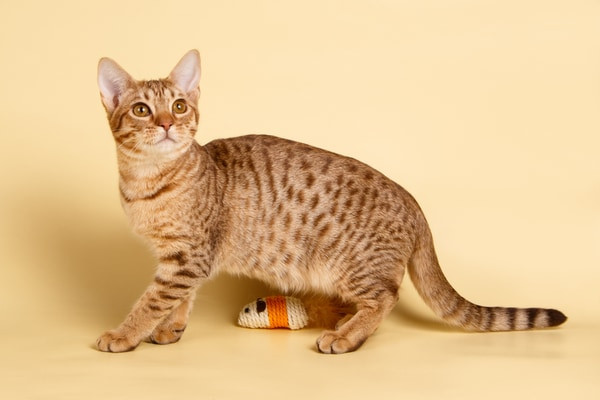 An Ocicat with a spotted coat, standing in a garden setting.
An Ocicat with a spotted coat, standing in a garden setting.
The Ocicat breed emerged unexpectedly in the 1960s when cat breeder Virginia Daly aimed to create a Siamese cat with Abyssinian-colored points, recounts Cheryl Hogan, a TICA judge. This breeding attempt resulted in an unintended yet captivating outcome: the Ocicat, quickly celebrated for its unique spotted appearance.
The Ocicat presents “a wild look in a domestic package,” Hogan remarks, emphasizing its accidental yet fortunate creation.
Beneath the Ocicat’s powerful, muscular build lies a loyal and affectionate temperament, Hogan notes. The breed’s coat colors include four variations: black, chocolate, lilac, and silver, each showcasing the distinctive spots.
Savannah Cat
 A Savannah cat with dark spots and tall ears, standing outdoors on a leash.
A Savannah cat with dark spots and tall ears, standing outdoors on a leash.
The Savannah cat is recognized for its tall, slender frame adorned with dark spots and other exotic markings. Its intriguing lineage includes the Serval, a long-legged spotted wild cat indigenous to Africa, according to Fisher. The first documented Savannah cat was born in 1986, the offspring of a domestic mother and a Serval father, Fisher points out. TICA holds the distinction of being the sole organization to officially recognize this breed.
Savannahs are known for being both affectionate and outgoing. They possess remarkably long necks, legs, and ears compared to typical domestic cats, Fisher explains. This breed is highly energetic and requires daily interaction. Even in the show ring, the Savannah maintains an “assertive and active” demeanor, Fisher observes.
The Savannah’s markings consist of bold, solid dark-brown to black spots, which can be round, oval, or elongated. Stripes extend from the back of the head over the shoulder blades, slightly fanning out across the back, Fisher details.
Pixiebob
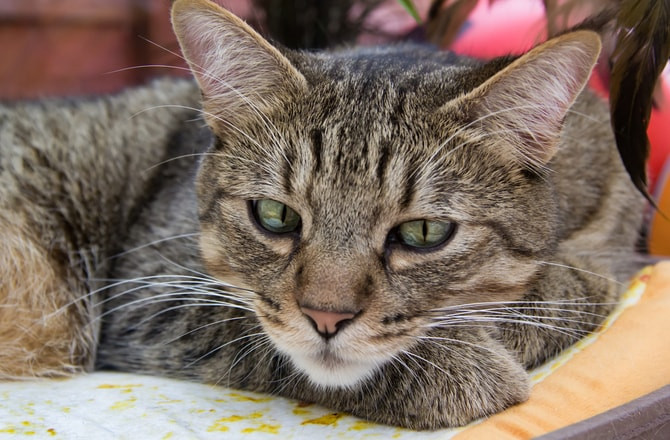 A Pixiebob cat with a short tail and hooded eyes, sitting on a wooden surface.
A Pixiebob cat with a short tail and hooded eyes, sitting on a wooden surface.
The Pixiebob is a muscular, sturdy cat with a distinctive “hooded” appearance that resembles the wild Coastal Red Bobcat of the Pacific Northwest, says Fisher. This breed, available in both long-haired and short-haired varieties, is recognized for its bobbed tail and the prevalence of polydactylism (extra toes) within the breed, she adds.
The Pixiebob’s origin dates back to the 1980s when breeder Carol Ann Brewer began breeding various spotted cats with short tails in Washington state, Fisher recounts. Brewer named the breed after one of her original cats, a female named Pixie, and the breed’s characteristic stubby tail. TICA granted official recognition to the Pixiebob in 1995.
“A Pixiebob is very distinctive-looking,” Fisher emphasizes. “The breed has gained considerable popularity due to its unique appearance.”
Ideally, the Pixiebob exhibits a brown spotted tabby pattern, with shades ranging from tawny to reddish-brown, she describes. The breed’s spots should be small and softened by heavy ticking, and their eye color is typically brown or green. Some Pixiebobs also feature lynx-like tufts on their ears. And then there’s the tail: at a minimum, the Pixiebob’s tail measures 2 inches, with a maximum length reaching to the cat’s hock, Fisher clarifies.
Serengeti
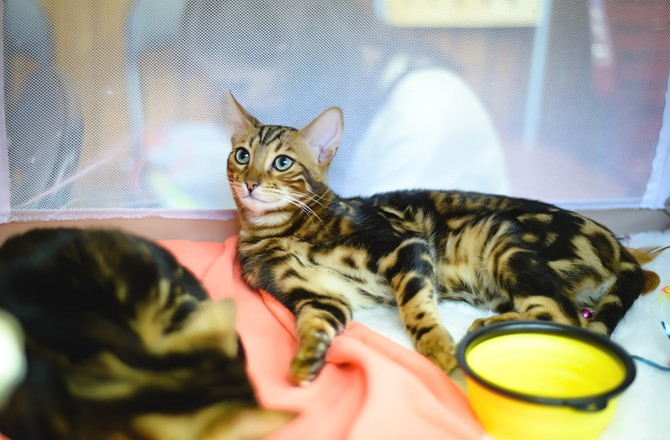 A Serengeti cat with large, round-tipped ears and a spotted coat, standing on a tree branch.
A Serengeti cat with large, round-tipped ears and a spotted coat, standing on a tree branch.
The Serengeti is another spotted cat breed developed to resemble its wild counterparts and is among TICA’s more recent additions.
“The breed is totally man-made—the original intent was to create what the Savannah is today but without using any wild blood,” Fisher explains. The Serengeti cat was created in the 1990s by Karen Sausman of California, who aimed to develop a breed that mirrored the African Serval, Fisher says. However, the Serengeti has no Serval ancestry; its lineage includes Bengal and Oriental Shorthair breeds, Fisher clarifies.
The Serengeti’s black spots are distributed in a widely spaced, random pattern, and its coat is available in shades of golden brown or gray, and even solid black. Even the solid black Serengeti cats subtly display barely visible “ghost” spots. Other notable features include their gold or amber eyes and their large, round-tipped ears, Fisher highlights.
Serengeti cats are agile and alert, possessing a confident and friendly temperament. This breed can be quite vocal and thrives on companionship with its humans, Fisher notes. When properly introduced, Serengetis typically get along well with other pets, she adds.
Spotted cat breeds offer not only stunning aesthetics but also wonderful companionship, making them excellent additions to families. If you’ve decided to welcome a spotted cat breed into your home—and found the perfect feline companion—be sure to check out our cat adoption checklist for guidance.
Read More
